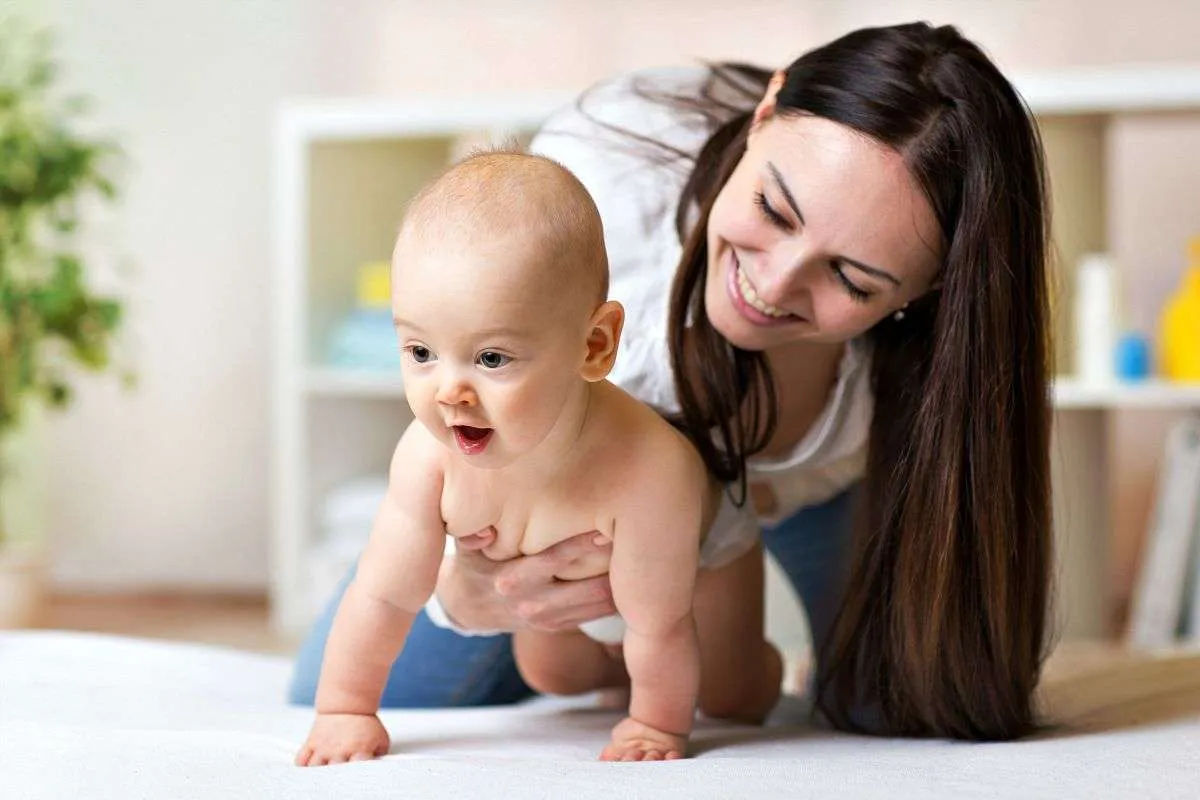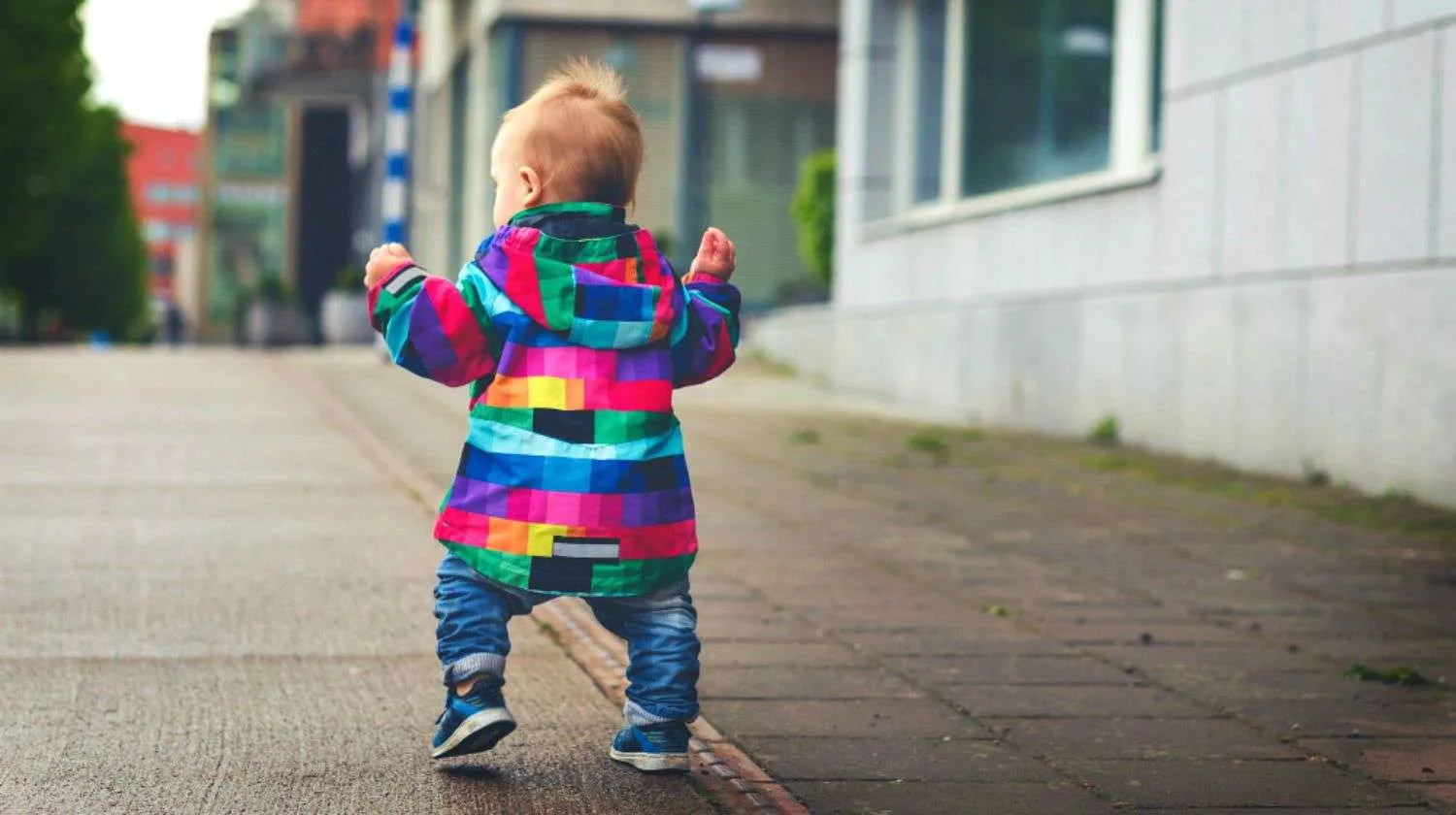When Do Babies Start Walking? | Baby’s First Steps Timeline
Want to learn when babies walk? In this article, we will talk about when these little ones should walk and what you can do to help them become independent.
RELATED: Baby Weaning Techniques
This post may contain affiliate links. For my full disclosure policy click here.
In this article:
- A Baby’s First Walk Depends on Each Child
- When Do Babies Walk?
- What Age Do Babies Start Walking on Their Own?
- When Should You Be Concerned?
- What’s Next After Your Baby’s First Steps?
When Do Babies Walk?: Things to Know
A Baby’s First Walk Depends on Each Child
Watching your baby take those first uncertain steps toward independence and go through a part of their physical development is one of the most exciting milestones parents experience.
But, if you’re wondering “what age do babies walk?” and “when do babies walk and then run?” the answer can vary depending on each child. It doesn’t stop parents from trying to gauge their own baby’s progress, though. Learn the signs to watch for as your baby learns to take off.
When Do Babies Walk?

The phrase “You have to crawl before you can walk” comes from a baby’s first efforts at getting up on their feet. It all starts with conditioning when they’re still only capable of laying on their back much of the time.
It will help if you start getting them to spend time on their belly to strengthen their core muscles.
They’ll gradually start pushing themselves up off the ground to support their weight. Babies start learning to engage their knees and other muscles to gain security.
Babies tend to learn to crawl around the age of 7 months. Make sure you’ve thought ahead and child-proofed.
Why? The next phase, which comes between 9 and 12 months, will make them pull on everything in sight.
Make sure you’ve got all your furniture secured in place. You don’t want them accidentally pulling something on top of themselves.
The experience of your baby learning to walk can be one of the most harrowing times for parents, and it doesn’t get any easier from there!
What Age Do Babies Start Walking on Their Own?

When do babies learn to walk by themselves? After crawling comes cruising.
They’ll start hanging onto things like the couch while taking steps. Your child may decide to let go after a few days and take off dashing into your waiting arms. Others want to take their time and continue feeling things out.
Some babies end up skipping different phases. Your child may crawl for months before standing up and walking when they feel like it.
Others never crawl and go straight to cruising on a piece of furniture, which makes them have stronger arms and legs. Allow your baby to progress at their own comfortable pace.
While you shouldn’t push your child to do things before they’re ready, you can do certain things to teach your baby to prepare for independence:
1. Reduce the Time Spent Carrying Them
Allow your baby to spend more time exploring and developing their motor skills outside of your arms. Being out of your arms can motivate them to move more and gain more confidence in their abilities.
2. Don’t Use a Walker
Walkers don’t allow children to develop the muscles in their hips or promote muscle tone, which is needed to support walking. It forces them to lean forward into an unnatural position.
This can lead to a developmental delay in learning to walk on their own.
3. Leave Their Feet Free
Remove the adorable baby shoes and let your child go barefoot when they’re ready to take those first steps. Free toes help them balance themselves if they decide to let go of the couch finally.
Buy them shoes with flexible soles once they’re steadier on their feet.
RELATED: When Do Babies Start Talking? Looking Forward To Key Milestones
4. Spend Less Time in a Playpen
These keep your baby too confined for them to start expanding their movements. Your baby should feel they have enough room to crawl, roll, and make other movements, eventually leading to walking skills.
5. Buy Toys Encouraging Movement
Push toys can be a great way to encourage your kid to start walking. Many of these come with adjustable wheels to fit your baby’s first movements.
What are push toys? These are toys children can literally push when playing and usually have wheels. These toys primarily provide good support for babies who are not ready to stand or walk on their own yet.
They can use them for support as they learn http://www.slaterpharmacy.com/ to balance on their own. Make sure you monitor your baby carefully during this stage. You don’t want them crashing and falling when you’re not there if they feel like exploring on their own.
6. Play with Your Baby When They Are Sitting Upright
At times when your baby is in a sitting position and playing with toys, always make time to play with them as much as possible. This allows them to maximize their movements through playing, especially if you are playing with a ball. They will need to move places to get to the ball when it rolls away from them.
Maximizing their movements also encourages bone and muscle strength, which supports their walking. Playing with them strengthens your bond as parent and child as well.
7. Let Them Crawl in a Wide Area Every Day If They Can Already Do So
If your baby can already crawl, let them do it every day as a practice, while occasionally letting them sit on their own. You can let them do it in a wider space in your home, like in your living room.
This will allow them to strengthen their leg muscles and bones, which play a significant role in their walking. Let them explore the room on their own or you can play with them, too.
When Should You Be Concerned?
Hopefully, the details above have answered that. Don’t start stressing if you see friends of yours with babies zipping along while yours stays content with crawling after their first birthday.
Your baby may just be doing things on their own schedule. That can still be the case as late as 18 months.
You may want to engage with a pediatrician if they’re not attempting any crawling, pulling up, or their brain development looks slow by the time they’re 12 months old. Watch for any regression from previously learned skills such as reverting to lying on the floor.
There’s much less cause to worry if they’re taking their time moving away from the security of crawling or cruising.
What’s Next After Your Baby’s First Steps?

Seeing your kids walking or taking their first few steps is one of the wonderful moments of being a parent. What comes after it will still undergo in several phases:
- Standing Position
Typically, at 14 months, your baby can already stand on their own. They can squat down and back up on their own, too, and might begin taking steps backward as well.
- Steady Baby Walking
Expect your baby to walk more steadily after they can stand alone. This usually happens on their 15th month and they may enjoy pushing and pulling things.
Their walk may involve their legs fairly far apart and their feet pointing outward. This is normal and helps them keep their stability and sense of balance.
- Taking Interests in Climbing Up and Down
Once your child masters the ability of steady walking, they will switch their interest in climbing up and down, especially with stairs. At 18 months, your toddler might be proficient with steady walking and begin climbing.
They may climb up on their own, but they might still need help in climbing down for a few months.
- Kicking and Jumping
Your baby may also want to kick a ball, even if they won’t always be successful using their legs and feet. Aside from that, jumping is also another phase your child will eventually learn once they know how to climb up and down.
At 25 to 26 months, your baby may learn the basics of jumping, such as standing on tiptoe, toe walking, and taking small jumps. They will learn to have steady jumps when they want to get something on a higher level or playing with flying toys.
- On the Go
By the time your child celebrates three years from being born, they have already mastered in their brain steady standing, climbing up and down, kicking, and jumping. They can now focus their energy on other motor skills they need to develop.
Next up, they will be more in tune with their balance and ride balancing bikes with ease. Although they can already be independent at this time, accidents can still happen, so you need to still watch their movements.
See a baby learning how to walk in this video from SACCONEJOLYs:
https://youtu.be/VnJx7bC_E2c
It’s normal to ask “When do babies walk?” But, take the time to enjoy watching your baby work through this phase. It’s not wrong to have fun watching a baby discover the joys of freedom.
It’s going to pass before you know it. Then, they will just leave you with only fond memories as you’re watching them walk out the door to go to school.
What are the steps you’re taking to help your baby walk? Share them with us in the comments section below!
Up Next:
- When Do Kids Start Talking? Frequently Asked Questions On Child Development
- At What Age Will Babies Sleep Through The Night
- 52 Inspirational Pregnancy Quotes For First-Time Moms-to-Be
Editor’s Note: This post was originally published on October 9, 2018, and has been updated for quality and relevancy.

